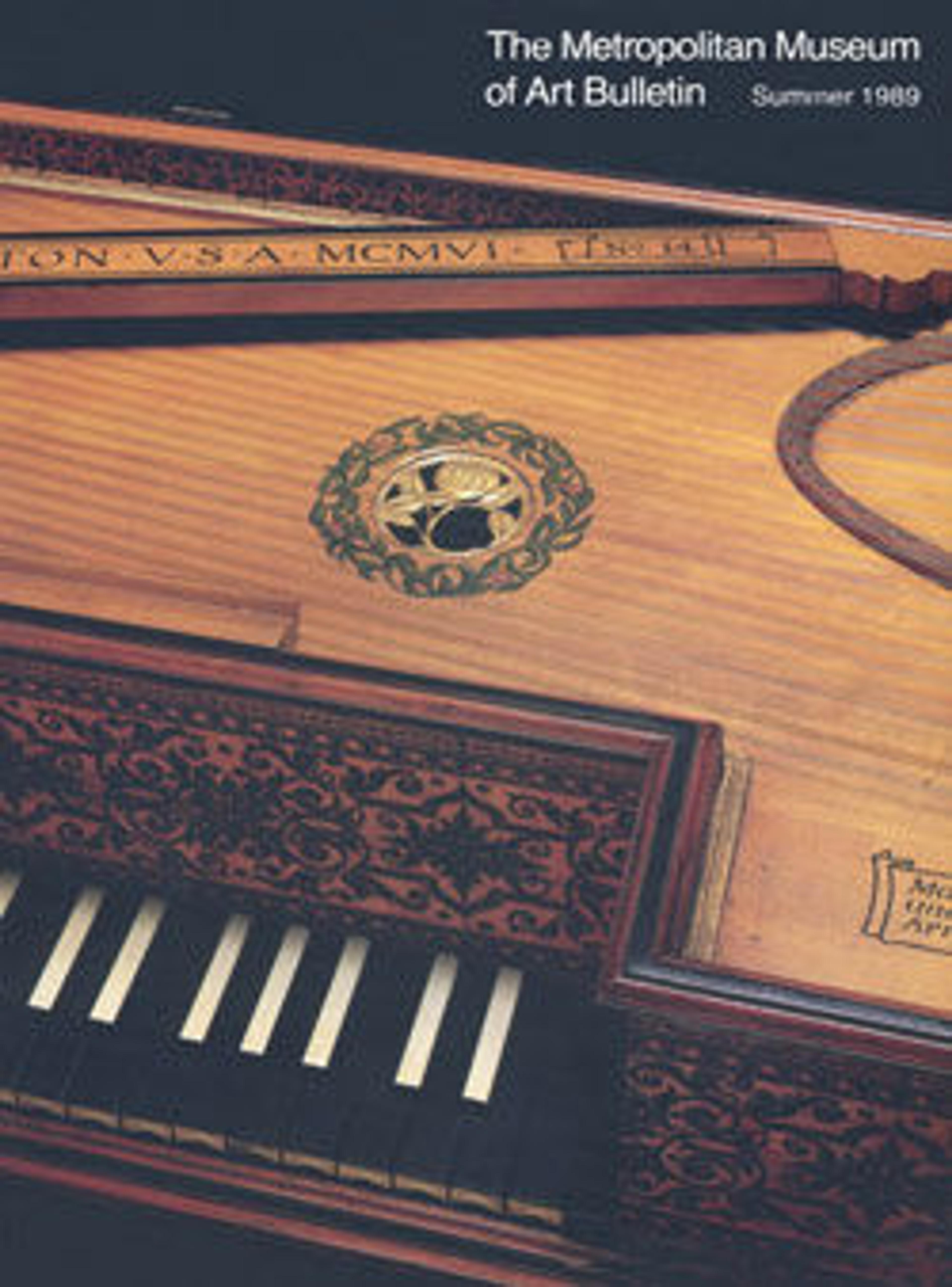Lyraflügel
This type of upright piano was made almost exclusively in Berlin between 1820 and 1850. The Lyraflügel was a fashionable fixture of middle-class Biedermeier parlors in northern German lands. In the period of the Napoleonic occupation (1806–13), the lyre had become a symbol of freedom and liberation. It was popularized in songs based on the collection of patriotic poems, With Lyre and
Sword, by the poet Theodor Körner (1791–1813). These songs, with their references not only to the lyres of Orpheus and Apollo but also to Friedrich Schiller’s ideas of freedom and liberation from tyranny, were sung for decades. The lyre became a widespread emblem, as ornament, as lyre guitar, or, here, as frame for the piano pedals. Schleip was the principal manufacturer of the Lyraflügel, even claiming in 1820 to be its inventor. The early Lyraflügel still had knee levers and straight legs.
From about 1825 on, Schleip built it, as here, with pedals. Finally, in about 1832 he began building heavier instruments with hanging actions. Its three pedals are for una corda, bassoon effect, and release of the dampers. A technical particularity of the instrument is that the sound board is suspended only on the right side so that its left side can vibrate freely like a tuning fork. To balance the volume between bass and treble and to prevent the bass from becoming too dull, the bass side of the sound board is spared. Finally, to further the harmony and beauty of the sound, the strings, the grain of the sound board, and the beams of the supporting structure run parallel to each other at the same angle.
Technical description: Compass. CC to a(superscript 4) (six octaves and a sixth). Three pedals (from left) una corda, bassoon (to g²), damper; lower case of mahogany or jacaranda veneer on four wooden legs terminating in metal claw feet; upper case in shape of gilded seven-string lyre, decorated with carved foliage on cross-bar and body, fluted arms terminating in griffin's head at each end, silk front; keys, ivory naturals, ebony sharps, white name-plate in center of nameboard bordered by marquetry lozenge band, repeated on sides of keyboard.
Sword, by the poet Theodor Körner (1791–1813). These songs, with their references not only to the lyres of Orpheus and Apollo but also to Friedrich Schiller’s ideas of freedom and liberation from tyranny, were sung for decades. The lyre became a widespread emblem, as ornament, as lyre guitar, or, here, as frame for the piano pedals. Schleip was the principal manufacturer of the Lyraflügel, even claiming in 1820 to be its inventor. The early Lyraflügel still had knee levers and straight legs.
From about 1825 on, Schleip built it, as here, with pedals. Finally, in about 1832 he began building heavier instruments with hanging actions. Its three pedals are for una corda, bassoon effect, and release of the dampers. A technical particularity of the instrument is that the sound board is suspended only on the right side so that its left side can vibrate freely like a tuning fork. To balance the volume between bass and treble and to prevent the bass from becoming too dull, the bass side of the sound board is spared. Finally, to further the harmony and beauty of the sound, the strings, the grain of the sound board, and the beams of the supporting structure run parallel to each other at the same angle.
Technical description: Compass. CC to a(superscript 4) (six octaves and a sixth). Three pedals (from left) una corda, bassoon (to g²), damper; lower case of mahogany or jacaranda veneer on four wooden legs terminating in metal claw feet; upper case in shape of gilded seven-string lyre, decorated with carved foliage on cross-bar and body, fluted arms terminating in griffin's head at each end, silk front; keys, ivory naturals, ebony sharps, white name-plate in center of nameboard bordered by marquetry lozenge band, repeated on sides of keyboard.
Artwork Details
- Title:Lyraflügel
- Maker:Johann Christian Schleip (German, 1786–1848)
- Date:ca. 1820–44
- Geography:Berlin, Germany
- Culture:German
- Medium:Wood, silk, gilt, ivory
- Dimensions:H. 7' 3"; W. 49 in., D. 2 ft.
Case L (perpendicular to keyboard): 60.3 cm (23 3/4 in.)
Case W (parallel to keyboard): 124 cm (48 13/16 in.)
Total H: 222.5 cm (87 5/8 in.) - Classification:Chordophone-Zither-struck-piano
- Credit Line:Gift of Mr. and Mrs. Theodore R. Sayers, 1968
- Object Number:68.47
- Curatorial Department: Musical Instruments
More Artwork
Research Resources
The Met provides unparalleled resources for research and welcomes an international community of students and scholars. The Met's Open Access API is where creators and researchers can connect to the The Met collection. Open Access data and public domain images are available for unrestricted commercial and noncommercial use without permission or fee.
To request images under copyright and other restrictions, please use this Image Request form.
Feedback
We continue to research and examine historical and cultural context for objects in The Met collection. If you have comments or questions about this object record, please contact us using the form below. The Museum looks forward to receiving your comments.
